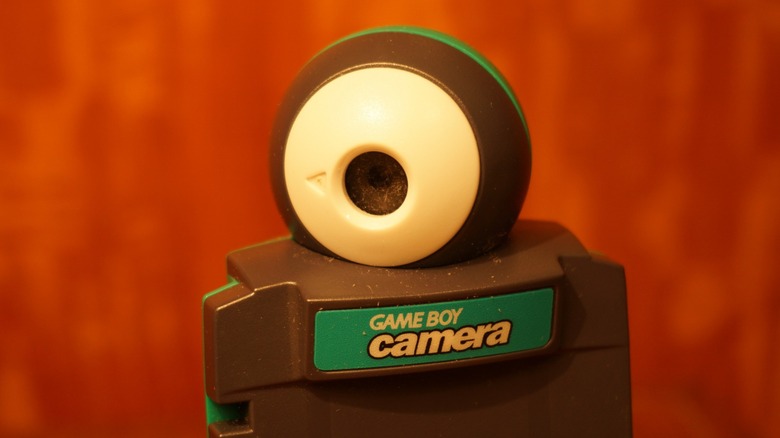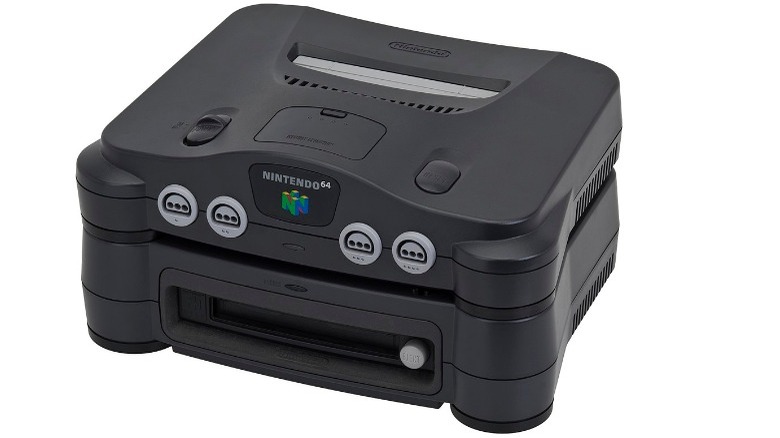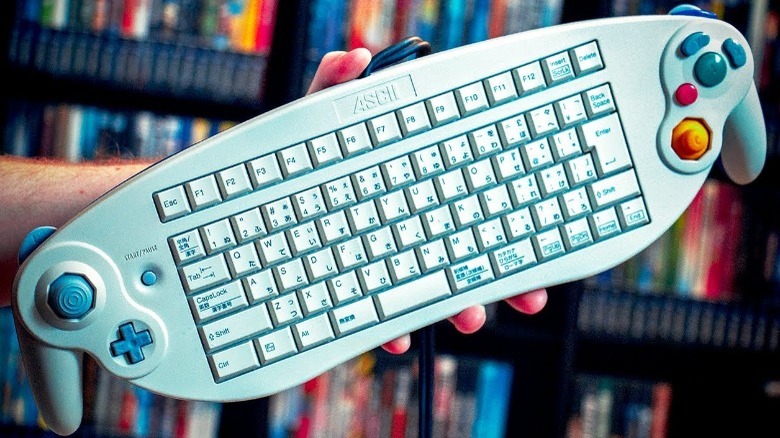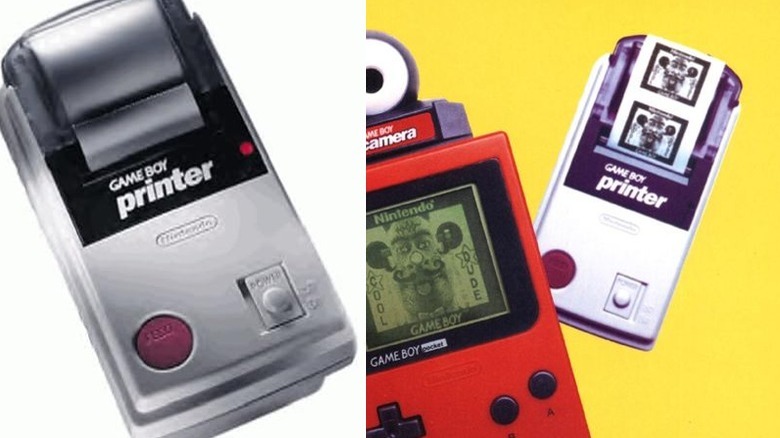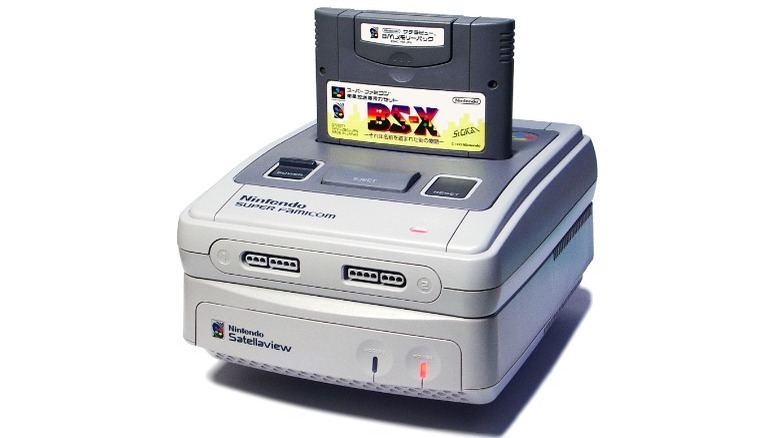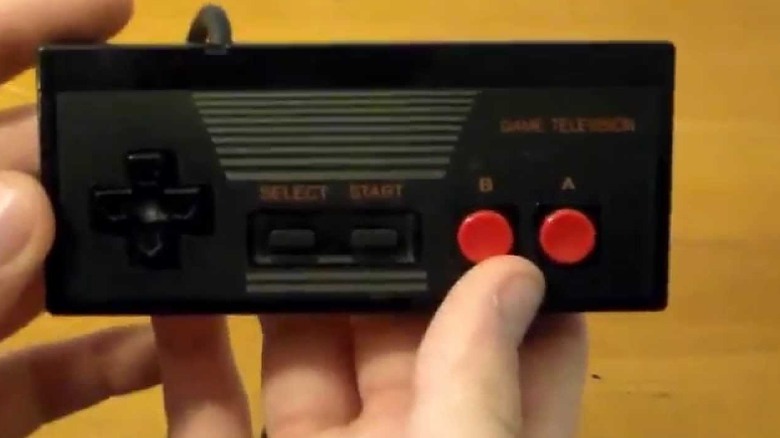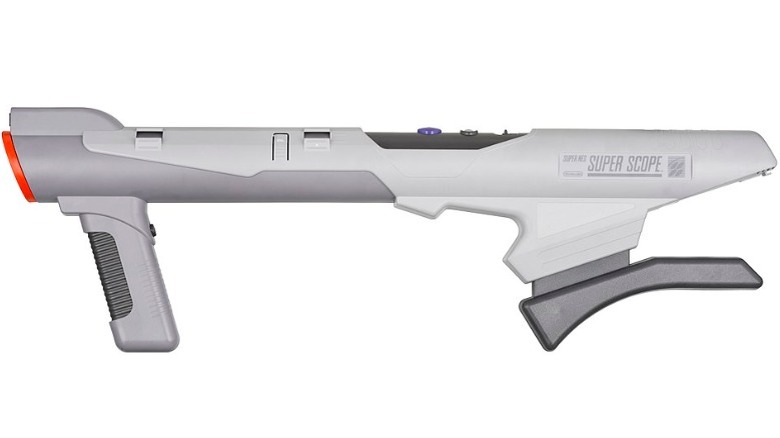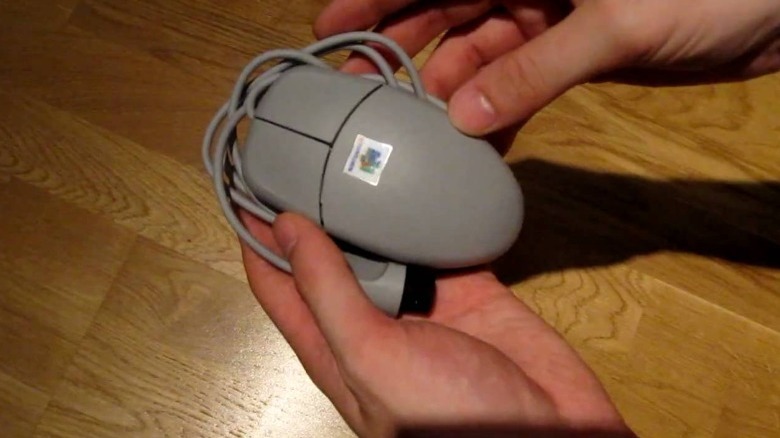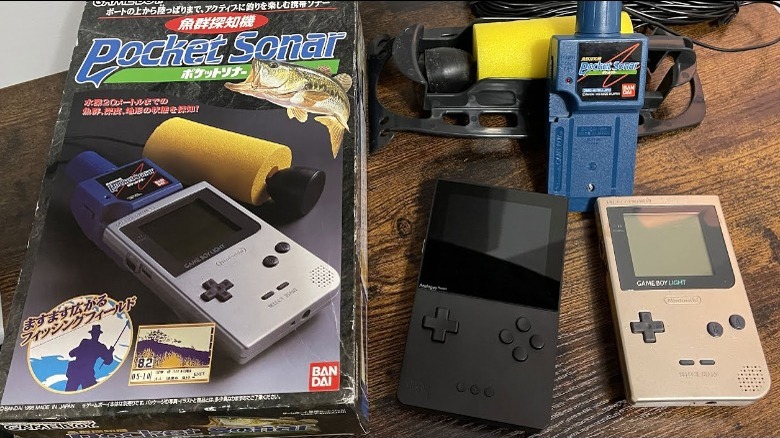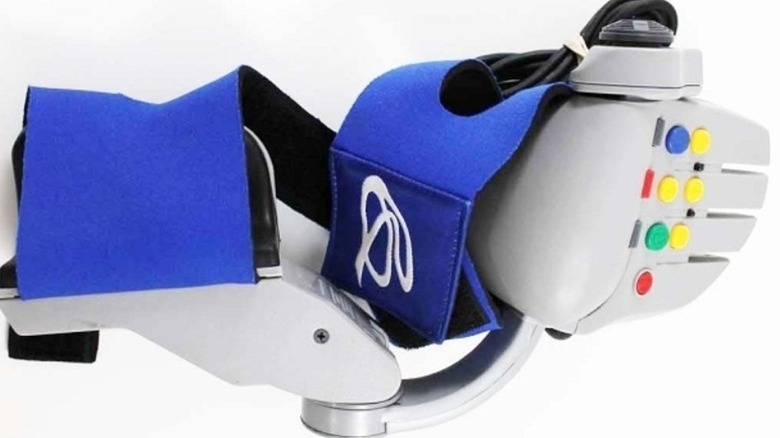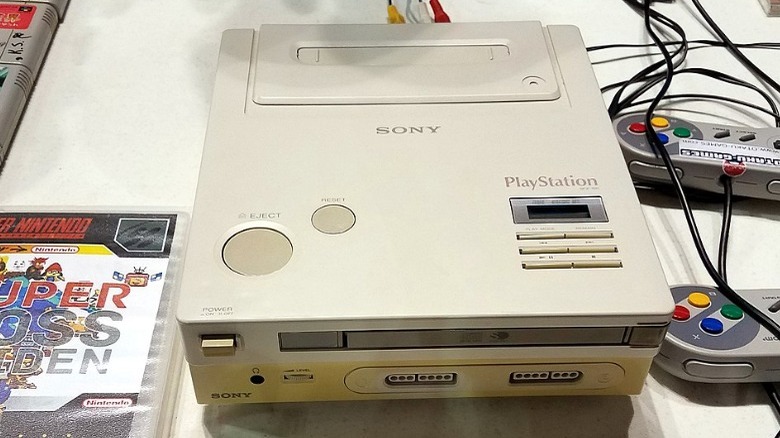The 10 Most Valuable Old Nintendo Accessories
Nintendo has always been known as something of an innovator in gaming. Not only did the company help popularize the home console, but they have often been at the forefront of developing new technologies and features. Some examples of Nintendo's early innovations include 3D visuals in the 3DS, motion controls for the Wii, and haptic feedback from the Nintendo 64's Tumble Pak. So it shouldn't be all that surprising that Nintendo has released a vast array of accessories over the years, expanding the capabilities of its various handheld and home consoles.
Many of these accessories have become sought after by collectors due to their rarity, increasing the value of these peripherals. Some are harder to come by because they are so old, while others may only have been produced in small numbers thanks to low demand or the fact they were often only made available in specific regions.
That means gamers may be sitting on a small fortune if they own any of these bizarre and rare Nintendo accessories.
Nintendo 64DD
The 64DD is a peripheral designed to enhance the capabilities of the Nintendo N64. It arrived in 1999, launching exclusively in Japan, and could be attached to the bottom of the Nintendo 64. Designed to enable the fifth-generation system to offer different experiences, from online games to new applications, the 64DD faced extensive delays. It was a commercial failure, selling just a few thousand copies before the accessory was quietly discontinued, while proposed games for the 64DD were either transferred to run on a standard Nintendo 64 or revived on the more powerful GameCube several years later.
The main draw of the 64DD was its ability to utilize Randnet, an internet service that lets those using the console access the world wide web in a limited fashion. Randnet was designed to do everyday tasks, such as sending emails, as well as allowing players to download games and even run an NES emulator. Meanwhile, the writable 64MB disk drive system could be used to store data and create content directly on the console. For many people, though, the 64DD failed to deliver many of its proposed features.
With the 64DD selling so few copies, the hardware has become quite rare in the intervening years as there are simply few in public hands. That has driven up the price of the 64DD and made it worth anywhere from $1,500 to almost $8,000.
[Featured image by Evan-Amos via Wikimedia Commons | Cropped and scaled | CC BY-SA 3.0]
GameCube ASCII Keyboard Controller
At first glance, the GameCube ASCII Keyboard Controller might look like a bad photoshop that couldn't possibly be real. After all, it is essentially just a stretched-out GameCube controller with a fully working keyboard squashed between the joypad's two halves. It looks ridiculous but the truth is that this was a very real peripheral that was released exclusively in Japan in 2002 and included all of the standard GameCube controller buttons alongside an alphanumeric keyboard that contained
The white accessory plugged directly into the GameCube and required two controller ports, meaning it wasn't useful for anyone wanting to play local multiplayer with four players. Its utility was further hampered by the fact that the keyboard only worked in "Phantasy Star Online" as the controller was manufactured specifically for that online RPG as it involved online multiplayer where communication between players was an important aspect of the gameplay. However, reviews from the time criticized the small keys, which made typing accurately extremely difficult.
With the keyboard controller only launching in Japan, the accessory is a rarity in most of the world. Anyone who wants to pick up one to add to their gaming collection will have to pay around $200, with new sealed copies costing at least triple that.
Game Boy Printer
Unlike many other Nintendo accessories that were only available in Japan, the Game Boy Printer was a popular product that made its way around the world. First released in 1998, it is a thermal printer that can connect to a variety of Game Boy models. Nintendo produced its own thermal paper for the device, which had a width of just over an inch and adhesive backing so that pictures could be attached to other surfaces like a sticker.
The Game Boy Printer proved to be a success and was in production until 2003 while Nintendo continued to sell official thermal paper for the accessory until 2007. It was largely used to print images directly from games, such as certificates for beating a certain challenge or pictures created by players. Some of the titles that supported the Game Boy Printer included "Donkey Kong Country," "The Legend of Zelda: Link's Awakening DX," and "Pokémon Gold." Those wanting to buy the peripheral now can expect to pay anywhere between $50 to $170, depending on the condition.
The Game Boy Printer was designed to work alongside the Game Boy Camera. This was another peripheral that could be inserted into a Game Boy in the cartridge slot and could be used to take photographs that could then either be transferred into certain games or printed out. Built-in software could even allow users to edit photographs with a variety of features, giving them a unique look. Like the Pocket Printer, the Game Boy Camera is also somewhat valuable and can be purchased online for around $40, with sealed versions costing in excess of $100.
Satellaview
The Satellaview is a SNES accessory that was released in 1995 and gave the console connectivity to the outside world. The satellite modem was a joint venture between Nintendo and St.GIGA. It allowed users access to various downloads, ranging from video games to magazines and even music. The two companies also offered contests and newsletters, although most of the content was games. These included remakes of older NES and SNES games as well as original releases from high-profile studios such as Square Enix and Capcom.
The Satellaview was never a huge success and only managed to attract just over a hundred thousand active users, despite being a highly advanced service that was in many ways a precursor to Xbox Live and the PlayStation Network. This was partly a result of the cost of the accessory, the fact that it was not available in most stores, and that its release date was around the same time as the more advanced consoles such as the Nintendo 64. Nintendo officially stopped supporting Satellaview in 1999, with St.GIGA shutting it down completely a year later.
These factors ensured that the Satellaview has become rarer in recent years, with the accessory being among the most costly Nintendo peripherals on the market. Loose versions can sell for as much as $80, while new sealed versions of the Satellaview can reach prices of more than $1,200.
[Featured image by Muband via Wikimedia Commons | Cropped and scaled | CC BY-SA 3.0]
Sharp Game Television Controller
Identical in function to standard NES controllers, the Sharp Game Television Controller is the input device for the Sharp Game Television. This was a television set produced by Sharp that had a built-in NES. The advantage of this is that players didn't have to own a separate console and therefore didn't have to worry about connecting it to a TV. The CRT television included a power and reset button and ports for two controllers to be connected but was otherwise a normal television that had the same basic functions as other TVs on the market. It first launched in 1989 but was discontinued the following year due to poor sales.
The controllers themselves differ in that they are completely black rather than grey but have the same layout and buttons as a normal NES joypad. The television set and its accompanying accessories are all incredibly rare and very few boxed versions have ever been sold among collectors. The general condition of these devices is usually poor as well, as they are older than most other pieces of Nintendo hardware and were not particularly popular when they were released. The few controllers that have made their way online have sold for between $160 and $1,200, with the price rising significantly if the controllers are in original packaging.
Super Scope
One of the most successful accessories for the original NES console was the NES Zapper, a light gun that could be used to simulate shooting a gun at a television screen. It was compatible with a large number of games, with titles like "Duck Hunt" and "Hogan's Alley" being two notable examples. The popularity of the NES Zapper meant that Nintendo was obviously keen to try and replicate the success when it launched the SNES. The result of this was the Super Scope — also known as the Nintendo Scope — a light gun that hit store shelves in 1992.
At two feet long, the Super Scope was significantly larger than the NES Zapper and also had a very different design, used more as a bazooka that had to be partly rested on the shoulder. However, the peripheral was wireless, using batteries to provide power and a sensor box that connected to the SNES to function correctly. Unfortunately, the Super Scope never managed to reach the same heights as its predecessor. Demand was lower and there were fewer games that supported the accessory. In fact, the most notable game for the light gun was "Super Scope 6," a collection of six different games that were bundled with it.
Although the Super Scope won't work with modern televisions, as it uses technology that is only compatible with CRT TVs, the light gun is still sought after by collectors. The bundle that includes "Super Scope 6" can be purchased for between $90 and $250.
[Featured image by Evan-Amos via Wikimedia Commons | Cropped and scaled | Public Domain]
Nintendo 64 Mouse
The 64DD was initially meant to transform the Nintendo 64 into a multimedia center that could connect to the internet via Randnet. While that dream didn't work out quite the way Nintendo intended, that didn't stop the company from producing a variety of additional accessories that were supposed to work with the 64DD and the games created for the hardware. One of the least well-known peripherals is the Nintendo 64 Mouse.
Like its predecessor, the SNES Mouse, this accessory was designed to be used with an artistic game in the form of "Mario Artist: Paint Studio." Officially, that was the only game that the Nintendo 64 Mouse was intended to be used for, although it does work to some extent in other titles as well. Bundled with that game, it was not available to purchase separately and was only sold in Japan. The accessory resembled a standard mouse with two buttons, although it did come with a Nintendo logo right in the center of the mouse.
Thanks to the fact that the Nintendo 64DD was a commercial failure, almost all of the accessories that were meant to be used with it are rare as they were only ever produced in low numbers. What that means for gamers is that getting a Nintendo 64 Mouse will cost anywhere from $160 to $1,200.
Game Boy Pocket Sonar
Over the course of its lifetime, the Game Boy had a large number of successful accessories that allowed players to expand the capabilities of the portable gaming machine. These ranged from the popular peripherals like the Game Boy Camera to more obscure accessories like a sewing machine attachment that players could use the console to choose stitch patterns. Perhaps the most bizarre of them all was another rare release that was known as the Pocket Sonar, a Japan-exclusive device that could connect to a Game Boy and be used as an underwater sonar device.
Officially called the Gyogun Tanchiki: Pocket Sonar, it was unsurprisingly the world's first sonar peripheral for a video game console. Using a specialist piece of equipment that went under the water alongside a cartridge that had to be inserted into the Game Boy, the Pocket Sonar was able to accurately detect submerged items. The information was then displayed on the Game Boy screen, giving users an idea of whether there were any fish, plants, or man-made items in the water. The accessory also included a fishing mini-game alongside a sort of fish encyclopedia that might be useful to those looking out for certain types of fish.
The Pocket Sonar is so rare that hardly any of them have been sold online, so there's little information about how much they might be worth. However, there's little doubt this accessory is one of the most valuable to have been released for the Game Boy.
Nintendo 64 Glove Controller
Way back in the era of the NES, Mattel released the Power Glove for the console. Marketed as a virtual reality device, it included an NES controller on the forearm with some additional programmable buttons and could be worn like a glove, allowing certain hand movements to control actions in games designed for the device. It saw limited success as only two games were designed to fully incorporate the Power Glove but that didn't stop Nintendo and Reality Quest from trying to resurrect the idea on the Nintendo 64.
The end result of this was the Glove. Like the Power Glove, specific hand and wrist movements could be transferred in-game, while the controller also had standard buttons on the fingertips. Unlike its predecessor, this allows the Glove to be used entirely one-handed. According to IGN, the peripheral was seen more as a novelty than anything else as it was clunky to use and would cause fatigue if used for any significant amount of time. However, it did provide an accessible way for those with one mobile hand to play games on the Nintendo 64.
The Glove didn't quite have the same popularity as the Power Glove, so it is rarer to find than many other Nintendo accessories. Online prices for the controller range from around $100 for a loose version without a box to $600 for a sealed variant.
Super NES CD-ROM System
Nintendo never officially released a CD-ROM accessory for the SNES, but the company came very close thanks to a partnership with Sony. The initial idea was for Sony to create an add-on for the SNES that would allow the console to play games from CDs as well as standard cartridges in addition to releasing a modified SNES that had the functionality built-in -– which was to be dubbed the PlayStation.
Due to disagreements over licensing fees and other issues, Nintendo unceremoniously ditched Sony and instead partnered with Phillips. This questionable decision had two notable effects. Firstly, this new collaboration resulted in the release of the panned Phillips CD-i and a collection of awful games based on valuable Nintendo properties. Secondly, it pushed Sony into developing its own video game console using the same name with quite a bit of success.
Despite the sudden departure between Nintendo and Sony, the two made a limited number of prototypes. However, it's unclear exactly how many were produced and survived to this day. Nintendo Life reports that one example surfaced in 2015 when a Reddit user posted images and videos of his find. The sheer rarity of the CD-ROM SNES accessory means knowing how much they would be worth is impossible. As a rough idea, an auction of the hybrid "PlayStation" console in 2020 sold for more than $300,000, providing a sense of the true value of these prototypes.
[Featured image by Paquitogio via Wikimedia Commons | Cropped and scaled | CC0 1.0]
